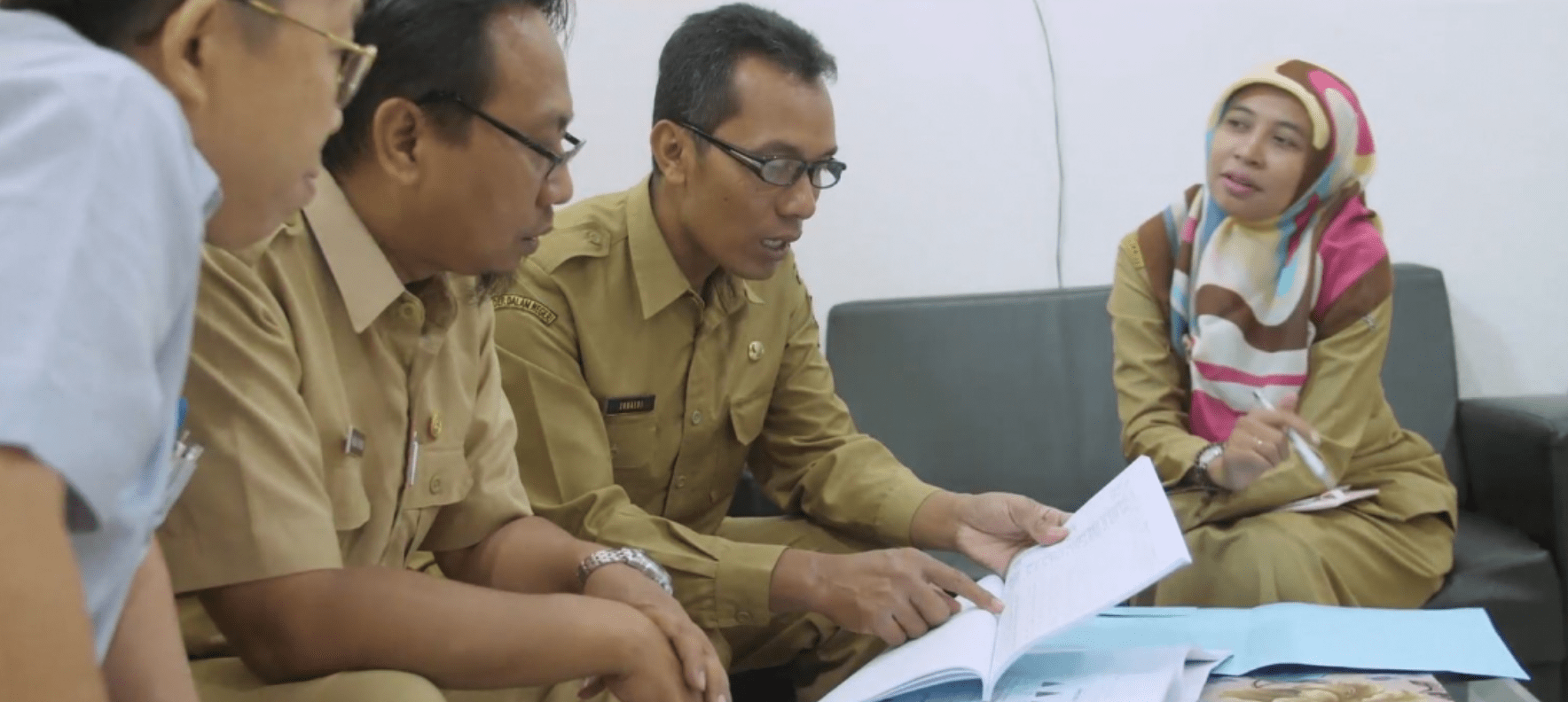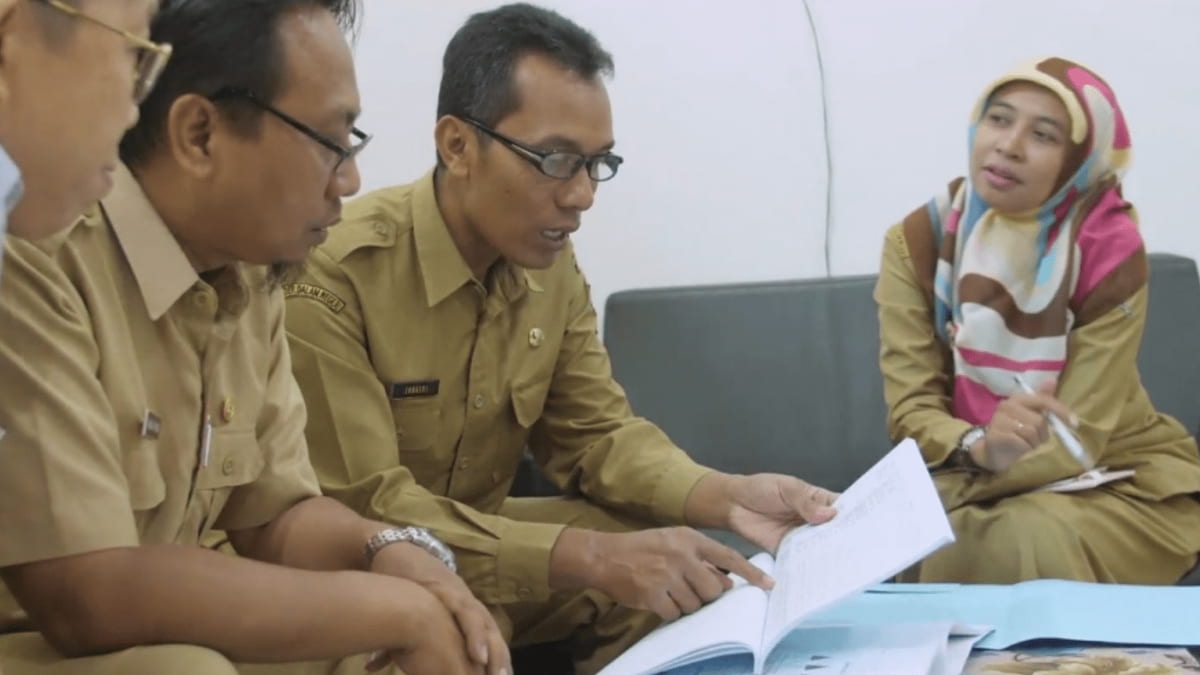Guest blog written by Karrie McLaughlin

When Indonesia decentralized just over 20 years ago, it did so partly on the promise that bringing services closer to citizens would help to improve them. However, at the same moment that responsibility for the provision of basic public services was shifting to local governments, the nature of those service delivery challenges was itself shifting from improving availability of services to improving access and quality. The logistical tasks of constructing clinic and school buildings and hiring nurses and teachers had largely been completed, and districts are now left looking toward the top of the tree at more difficult problems. This blog examines the MELAYANI – Untangling Problems in Improving Basic Services program to better understand the issues local governments face in dealing with more demanding service delivery challenges, and how they can better be supported in doing so.
Importantly, there is a common element to these more difficult problems—they are complex, context-specific and cannot be solved by one-size-fits-all prescriptions from the central government. The root causes of these problems are multi-faceted and frequently vary from one location to another. As such, they require district governments to play a more active role in identifying, understanding and responding to them.
MELAYANI addressed these challenges by working with local governments to solve service delivery problems of their choice, while testing scalable capacity development approaches and learning about locally-led change. Experiences in the three locations (Bojonegoro, East Java; Kubu Raya, West Kalimantan; and Belu, East Nusa Tenggara (NTT)) are presented in this video.

MELAYANI supported local governments to select the problems that they felt were most important, helping to ensure that they were locally salient. By anchoring analysis in a key issue, rather than a particular sector, it allowed both for more actors to be involved and for the identification and mobilization of new resources. In addition, by providing support to local governments to better understand citizen problems, it provided clearer arguments for policy stability and commitment.
Technically, the program wove together several strands of thinking. It was anchored in the Program Driven Iterative Adaptation (PDIA) approach, but augmented by other schools of thought, including Deliverology and experiences in implementing MELAYANI’s predecessor, the Rapid Assessment and Action Plan approach. The diagram below shows both the cycle that government actors followed as well as how the MELAYANI coaches supported them along the way.
The MELAYANI Cycle

How to help local governments?
MELAYANI demonstrated that local governments do have the capacity to identify and respond to service delivery problems. By focusing on problems to be solved (rather than examining specific programs or budget categories), districts identified and worked to address challenges that are often hidden by routine planning and budgeting processes, such as administrative hurdles or management problems. While these problems can significantly impair performance, they are often inexpensive to address, requiring shifts in political will.
Political will, however, should not be equated with leadership alone. In several instances, micro-shifts in the will or approaches of key bureaucrats were equally (or more) important for changing ineffective implementation arrangements or overcoming coordination challenges.
These shifts were most effectively driven by local evidence, collected by local (government) actors themselves. For example, in Belu district in NTT, a member of the local government team working to improve education quality examined the correlation between teacher certification and student test scores. The team initially believed that uncertified teachers were driving low performance, but the lack of correlation led the team to dig deeper into the issues in classrooms and schools. Their findings showed that better-performing schools did a better job of supporting their teachers through clear supervision and feedback by the headmaster, routine meetings focused on classroom issues (not administration) and use of school-level working groups where teachers could support each other. They identified further opportunities for support through the cross-school working groups and improved engagement by the district school monitors. This influenced the head of the primary school division in the education department, who has control over a number of implementation decisions, including how to implement working groups in support of teachers and how trainings take place.
Finally, presenting pictures of local positive lessons learned was important to help local government actors believe that they can do better. These examples were critical to building support for change by helping government officials see realized potential for change. More detailed operational notes on the process and outcomes are available here, here and here.
While the program demonstrated that local level (and locally-led) change is possible, the importance of the facilitators must be highlighted, as should the amount of support that they required. Finding facilitators who have the capacity to help a government team navigate through what is often a difficult analytical process is challenging. World Bank mentors supported facilitators throughout the program, and while their capacity developed considerably, future programs would continue to need to support facilitator development to scale up.
Finally, seeing change becomes important to support further local growth. While it is too soon to see changes in test scores as a result of MELAYANI support, local government officials, particularly staff of the education department, are now increasingly taking a problem-solving approach. Armed with deeper understanding of the challenges that they face, and a realization that there is not a single solution for success, they are looking across their portfolio of training, support to working groups, management of school monitors and more to find ways of continuing to improve.
This blog first appeared on the World Bank Blog.
